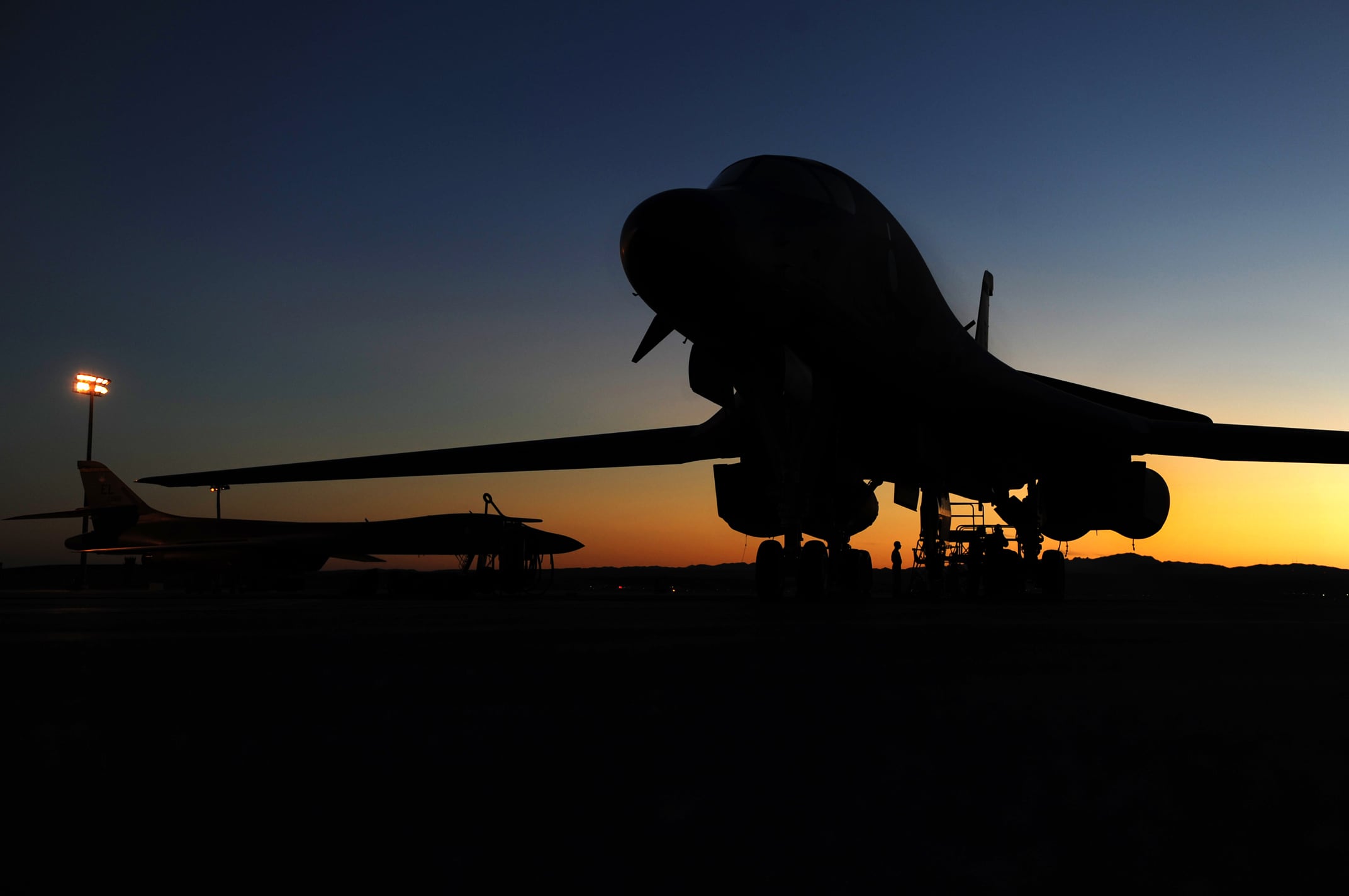The Air Force is beginning to return B-1B bombers to the air after grounding the entire fleet last month to investigate a fuel system issue.
Some Lancers resumed flight operations Monday, about two weeks after Air Force Global Strike Command ordered the fleet of 57 aircraft to stand down for safety inspections. The service declined to say how many were cleared for flight, citing operational sensitivities.
“Individual B-1B aircraft will return to flight as inspections and maintenance directed during the stand-down are completed on each aircraft,” Global Strike said in a release Thursday.
At issue is the bomber’s fuel filter, which keeps contaminants out of the fuel tank. An aircraft emergency at Ellsworth Air Force Base, South Dakota, on April 8 led the Air Force to find a hole leaking fuel, which jeopardized the bomber’s ability to fly, The War Zone first reported. That led the service to ground the fleet in search of further problems.
“Maintenance depot personnel disassembled the augmenter fuel filter housing and performed a series of robust inspections using the latest techniques,” including X-rays and blue-light tools, Global Strike said. “After each unit was determined to be free of defects, it was reassembled, pressure-checked, and returned to service.”
Global Strike spokesperson Lt. Col. Will Russell declined to say how many aircraft were found to have the fuel filter issue so far.
“The aircraft are still safe to fly and we are confident that this stand-down has resulted in increased safety within the B-1B fleet,” Maj. Gen. Mark Weatherington, the commander responsible for the bomber force under 8th Air Force, added in the release.
USAF has grounded the entire B-1 fleet multiple times in the past few years, as the bombers have taken on major wear and tear after years flying combat missions in the Middle East.
In addition to Ellsworth, B-1Bs are based at Dyess AFB, Texas, with a major maintenance shop at Tinker AFB, Oklahoma. They no longer have a permanent presence in the Middle East, but still regularly fly to Europe, the Middle East and the Pacific. Lancers carry non-nuclear weapons.
RELATED

With the B-1s temporarily unable to fly, and six B-52s assigned to provide air cover for American troops withdrawing from Afghanistan, that leaves the B-2 fleet and the remaining B-52s available for missions. That’s not a problem, the Air Force says.
“There is zero operational impact providing bomber task force support to combatant commands across the globe,” Russell said. “Air Force Global Strike bombers will continue to support anytime, anywhere if called upon.”
Air Forces Central spokesperson Capt. Carrie Volpe said she’s not aware of any changes to bomber patrols in the region as a result of the fleet restrictions. Pacific Air Forces did not immediately comment on any impacts to bombers in the area; U.S. Air Forces in Europe spokesperson 2nd Lt. Charis Bryan declined to discuss operational specifics.
Mark Gunzinger, a retired Air Force colonel who serves as the director of future concepts and capability assessments at the Air Force Association’s Mitchell Institute for Aerospace Studies, expects bomber task force operations are sustainable even with the current number of available aircraft.
“The Air Force’s bomber [primary mission aerospace vehicle inventory] is now 86 aircraft. This is a new all-time low,” he said in an email. “There could be a problem if the Afghan mission should grow significantly and then last for a long period of time.”
That could prompt the Air Force to scale back bomber patrols, then training and maintenance to keep planes available.
“You can only do so much with so little,” he said.
Rachel Cohen is the editor of Air Force Times. She joined the publication as its senior reporter in March 2021. Her work has appeared in the Washington Post, the Frederick News-Post (Md.), Air and Space Forces Magazine, Inside Defense, Inside Health Policy and elsewhere.








